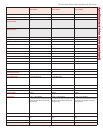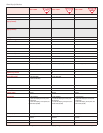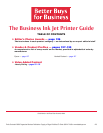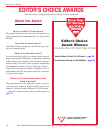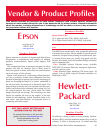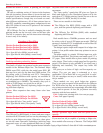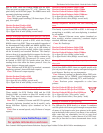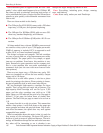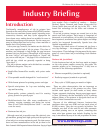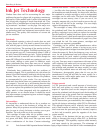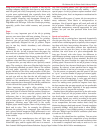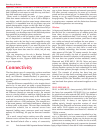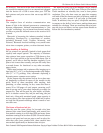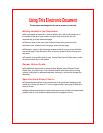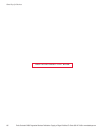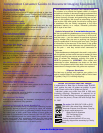
The Business Ink Jet Printer Guide: Industry Briefing
Entire Contents © 2006 Progressive Business Publications. Copying of Pages Prohibited.To Order: 800 247 2185 or www.betterbuys.com 135
ter/receiver). This can be in the form of built-in electron-
ics, an add-on computer card, or an external unit plugged
into the device via a USB or some other port. HP has
both printers and print servers that can accept 802.11b
signals.
Bluetooth
The simplest form of wireless communication uses
beams of light in the infrared spectrum to communicate
between components. Infrared communications is “line
of sight” technology. As you know from channel surfing,
you have to point the infrared source at the receiver for it
to work.
Bluetooth is becoming the industry-standard infrared
technology. Developed by a consortium of vendors,
including Siemens, Intel, Toshiba, Motorola, and
Ericsson, Bluetooth involves building a very small trans-
ceiver into a computer, printer, or other electronic device.
Paper handling & finishing
Ink jet printers are generally limited in both paper-feed
capacity and output options. The majority of business-
class printers have paper capacities of 250 sheets or less,
and a f
ew have options to go beyond 400 sheets. But in
general, you’ll have to feed the machine regularly if you
plan to use it more than casually, and you will rarely have
a second drawer for letterhead or any other secondary
paper choice.
While most business ink jet printers offer imaging up to
legal size (8.5" x 14"), an increasing number offer ledger-
size (11" x 17") printing
. Also
, automatic duple
xing is
becoming more common as an option.
On the output side, the options are few. As we have stat-
ed,
duplexing is offered on many of the models in this
guide. None of these machines offer stapling, hole
punching, or offset stacking. In fact, some units have a
scanty 50 to 100 pages of total output, meaning you’ll
have to get up out of your chair frequently to empty the
output tr
ay. That will be good for your health, no doubt,
but it is another reason why ink jets and long jobs just
don’t mix. Along with sustained speed, paper capacity is
an ar
ea w
her
e color laser printer
s still mak
e ink jet print-
ers look like 98-pound weaklings when it comes to seri-
ous of
fice use
.
The future of business ink jets
Ov
er the past f
e
w y
ear
s
,
prices for low-end color laser
printers have come down significantly, with several low-
cost models coming in at less than $500 and many faster
mac
hines coming in at less than $1,000. Given the advan-
tages in real speed and cost per page as well as other fea-
tures that color laser printers have, these models have
encroac
hed significantl
y on b
usiness-c
lass ink jets.
W
e would be giving up on the business ink jet printers
except for the arrival of HP’s new Officejet Pro models.
These machines are tolerably fast, even at laser printer
resolution. They also have costs per page that compete
well with all but the lowest cost laser jet printers, under 8¢
per page in color, around 1.5¢ per page in black-and-
white. In addition, they are quiet, low-profile machines,
in contrast to the bulk of color lasers, making them more
suitable for a desktop. These are machines that give busi-
ness ink jets a real future, and we expect faster models to
follow the first introductory models.



